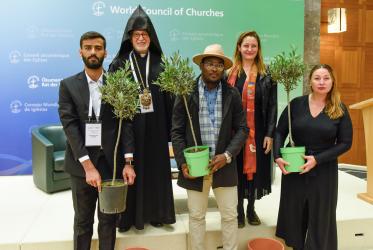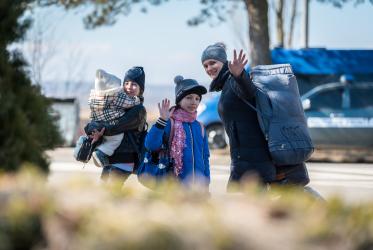A little girl, barely four years I would estimate, crawls underneath a barbed-wire fence at the Serbian-Hungarian border. Her face is straight as she glances ahead, irradiated by sunbeams; her fingers are cramped into the muddy soil. A man on his knees, who could be her father, is softly pushing her from behind. In the background a crowd of people have gathered, presumably waiting for their turn to creep under the fence.
This little girl’s face on the photograph, with an expression at the same time serious and light, with eyes of a rare profundity, which seem to have seen more than a child of her age habitually would have seen, never left me. It stands for so many children, men and women currently fleeing from war and terror in their home countries in search of a safe place in Europe.
Hundreds of thousands refugees are on the move, and more are yet on their way as I write these lines. A reality, which for so many in Europe these past years had remained remote, suddenly becomes close and subject of fierce controversies.
Fear seems to be the guiding emotion on either side. The refugees advance fearfully and loaded with the loss of their homes into an uncertain future. The local residents react with fear over the number of refugees and how they may be able to live together.
The diversity of cultures, religions and languages becomes a threat for what people imagine their societies can possibly bear. However, this is only one side.
The truth is that there is not only fear, which divides people, but there is also the discovery of their common humanity and the understanding that people’s deep-seated longing for security and peace is wrapped up in refugees’ quest for a safe and secure home.
Therefore telling and listening to stories of refugees is important. It makes a seemingly remote reality become tangible, and it enables to tie bonds with each other, whether you are resident or refugee. You are able to recognise each other as belonging to the same human family, sharing fears, hopes and dreams.
Just like the little refugee girl at the border. Her story and her face remind everyone how vulnerable especially young girls and women are when they have to flee.
Exposed to diverse forms of hardship, sometimes even abused during the perilous journey, they at the same time give a strong testimony of dignity and determination. From within the experience of vulnerability they emerge as resilient advocates for a better future.
The little refugee girl crawling underneath the barbed-wire fence epitomises this resilience of refugee women and girls all over the world, which imbues in me, as in anyone who cannot forget her face, the fortitude to continue to walk together on this stony road towards justice and peace.
This is what I appreciate about the Pan African Women’s Ecumenical Empowerment Network (PAWEEN), a project the WCC department on Ecumenical Theological Education recently launched together with African, Caribbean, North and Latin American partners. It is not so much about the big changes, more about the little steps we make here and now. A way by which women all over the world can bond and join in the pilgrimage of justice and peace.
It is about nurturing this refugee girl’s and all young girls' dreams of what they may deem today an improbable future. It is about ensuring that their stories are heard, especially those of young women of African descent, too often untold.
It is to make sure, that the voices of these women and girls are uplifted, and opportunities are created that their dreams of finding their place in our world becomes a reality.
Find out more about PAWEEN:
The Pan African Women’s Ecumenical Empowerment Network (PAWEEN) is a joint project of the World Council of Churches’ Programme on Ecumenical Theological Education and Bread for the World USA together with ecumenical women leaders in diverse regions of the world, with the aim to celebrate the legacy of Pan African women’s contributions to the ecumenical movement and to encourage young women of African descent worldwide to follow their footsteps and to seize opportunities of engagement towards transformation in church and society. For more information consult also the World Council of Churches website.
Find out more about migration:






